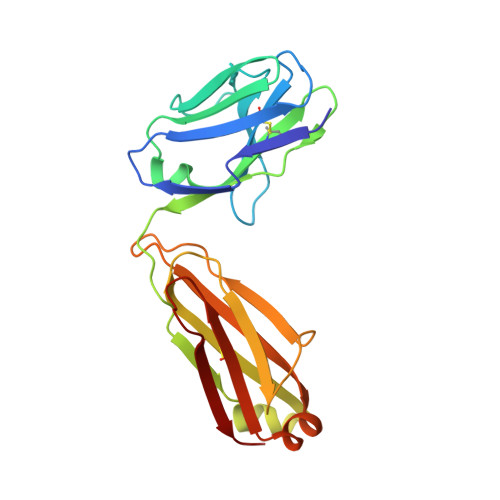Delineating the mechanism of anti-Lassa virus GPC-A neutralizing antibodies.
Enriquez, A.S., Buck, T.K., Li, H., Norris, M.J., Moon-Walker, A., Zandonatti, M.A., Harkins, S.S., Robinson, J.E., Branco, L.M., Garry, R.F., Saphire, E.O., Hastie, K.M.(2022) Cell Rep 39: 110841-110841
- PubMed: 35613585
- DOI: https://doi.org/10.1016/j.celrep.2022.110841
- Primary Citation of Related Structures:
7S8G, 7S8H, 7TYV - PubMed Abstract:
Lassa virus (LASV) is the etiologic agent of Lassa Fever, a hemorrhagic disease that is endemic to West Africa. During LASV infection, LASV glycoprotein (GP) engages with multiple host receptors for cell entry. Neutralizing antibodies against GP are rare and principally target quaternary epitopes displayed only on the metastable, pre-fusion conformation of GP. Currently, the structural features of the neutralizing GPC-A antibody competition group are understudied. Structures of two GPC-A antibodies presented here demonstrate that they bind the side of the pre-fusion GP trimer, bridging the GP1 and GP2 subunits. Complementary biochemical analyses indicate that antibody 25.10C, which is broadly specific, neutralizes by inhibiting binding of the endosomal receptor LAMP1 and also by blocking membrane fusion. The other GPC-A antibody, 36.1F, which is lineage-specific, prevents LAMP1 association only. These data illuminate a site of vulnerability on LASV GP and will guide efforts to elicit broadly reactive therapeutics and vaccines.
Organizational Affiliation:
La Jolla Institute for Immunology, La Jolla, CA 92037, USA.















